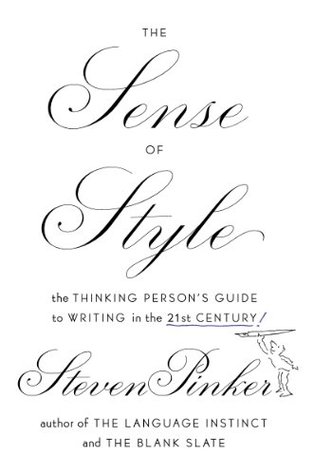More on this book
Community
Kindle Notes & Highlights
Read between
November 18 - November 19, 2018
Many style manuals treat traditional rules of usage the way fundamentalists treat the Ten Commandments: as unerring laws chiseled in sapphire for mortals to obey or risk eternal damnation.
the orthodox stylebooks are ill equipped to deal with an inescapable fact about language: it changes over time.
Language is not a protocol legislated by an authority but rather a wiki that pools the contributions of millions of writers and speakers, who ceaselessly bend the language to their needs and who inexorably age, die, and get replaced by their children, who adapt the language in their turn.
As people age, they confuse changes in themselves with changes in the world, and changes in the world with moral decline—the illusion of the good old days.
Good writing can flip the way the world is perceived,
Good writing is understood with the mind’s eye.
Good writing finishes strong.
The key to good style, far more than obeying any list of commandments, is to have a clear conception of the make-believe world in which you’re pretending to communicate.
The truth can be known, and is not the same as the language that reveals it; prose is a window onto the world.
The goal of classic style is to make it seem as if the writer’s thoughts were fully formed before he clothed them in words.
Classic style minimizes abstractions, which cannot be seen with the naked eye.
Could you recognize a “level” or a “perspective” if you met one on the street? Could you point it out to someone else? What about an approach, an assumption, a concept, a condition, a context, a framework, an issue, a model, a process, a range, a role, a strategy, a tendency, or a variable? These are metaconcepts: concepts about concepts.
Call it the Curse of Knowledge: a difficulty in imagining what it is like for someone else not to know something that you know.
The better you know something, the less you remember about how hard it was to learn.
The key is to assume that your readers are as intelligent and sophisticated as you are, but that they happen not to know something you know.
The code that translates a web of conceptual relations in our heads into an early-to-late order in our mouths, or into a left-to-right order on the page, is called syntax.3 The rules of syntax, together with the rules of word formation (the ones that turn kill into kills, killed, and killing), make up the grammar of English.
To hear or read a statement is to believe it, at least for a moment. For us to conclude that something is not the case, we must take the extra cognitive step of pinning the mental tag “false” on a proposition. Any statement that is untagged is treated as if it is true. As a result, when we have a lot on our minds, we can get confused about where the “false” tag belongs, or can forget it entirely. In that case what is merely mentioned can become true.
Every negation requires mental homework, and when a sentence contains many of them the reader can be overwhelmed.
There is a big difference between a coherent passage of writing and a flaunting of one’s erudition, a running journal of one’s thoughts, or a published version of one’s notes.
Kory Stamper, an editor at Merriam-Webster, has pointed out, if you insist that decimate be used only with its original meaning, “kill one in ten,” shouldn’t you also insist that December be used with its original meaning, “the tenth month in the calendar”?


